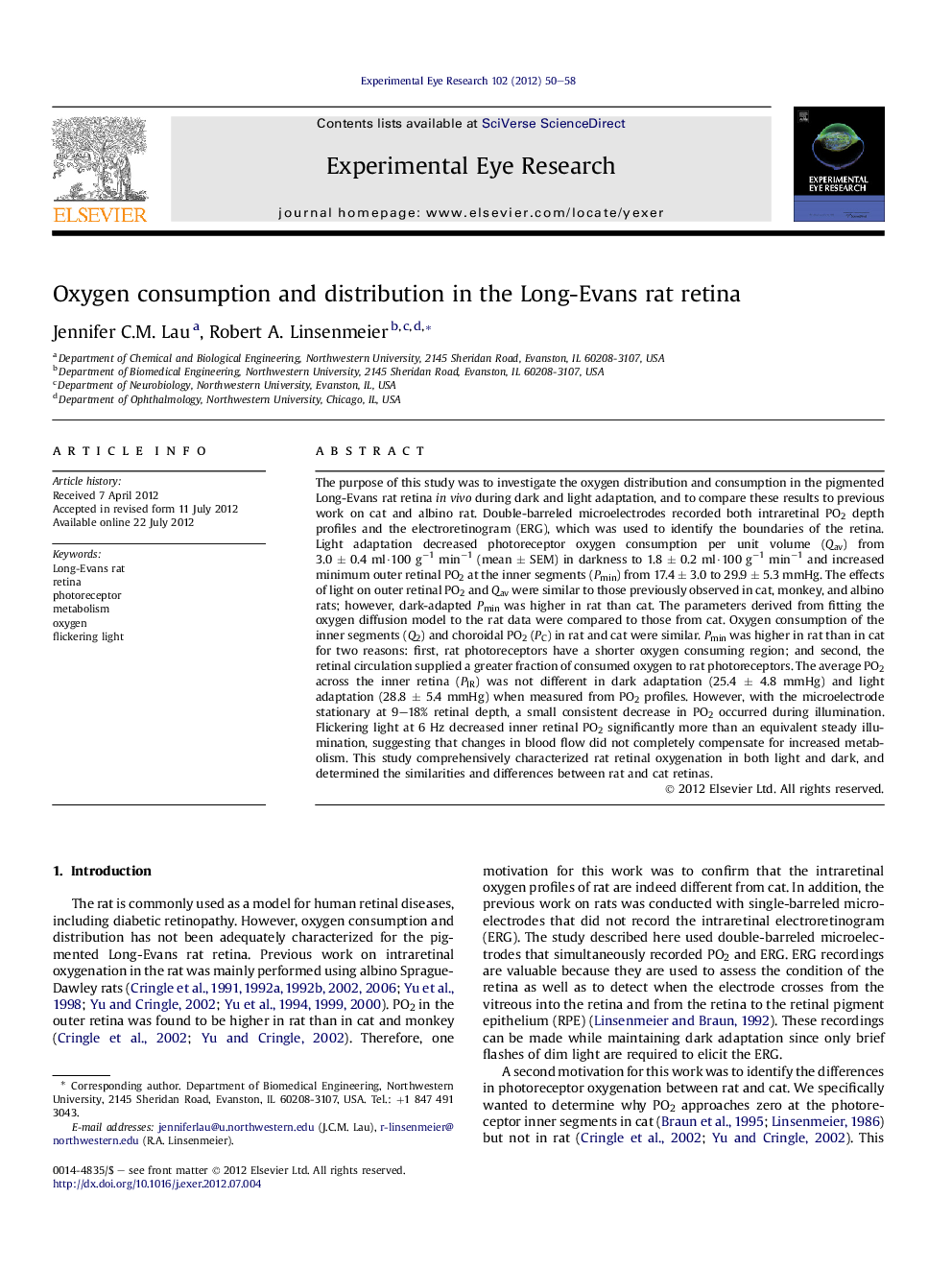| Article ID | Journal | Published Year | Pages | File Type |
|---|---|---|---|---|
| 4011301 | Experimental Eye Research | 2012 | 9 Pages |
The purpose of this study was to investigate the oxygen distribution and consumption in the pigmented Long-Evans rat retina in vivo during dark and light adaptation, and to compare these results to previous work on cat and albino rat. Double-barreled microelectrodes recorded both intraretinal PO2 depth profiles and the electroretinogram (ERG), which was used to identify the boundaries of the retina. Light adaptation decreased photoreceptor oxygen consumption per unit volume (Qav) from 3.0 ± 0.4 ml·100 g−1 min−1 (mean ± SEM) in darkness to 1.8 ± 0.2 ml·100 g−1 min−1 and increased minimum outer retinal PO2 at the inner segments (Pmin) from 17.4 ± 3.0 to 29.9 ± 5.3 mmHg. The effects of light on outer retinal PO2 and Qav were similar to those previously observed in cat, monkey, and albino rats; however, dark-adapted Pmin was higher in rat than cat. The parameters derived from fitting the oxygen diffusion model to the rat data were compared to those from cat. Oxygen consumption of the inner segments (Q2) and choroidal PO2 (PC) in rat and cat were similar. Pmin was higher in rat than in cat for two reasons: first, rat photoreceptors have a shorter oxygen consuming region; and second, the retinal circulation supplied a greater fraction of consumed oxygen to rat photoreceptors. The average PO2 across the inner retina (PIR) was not different in dark adaptation (25.4 ± 4.8 mmHg) and light adaptation (28.8 ± 5.4 mmHg) when measured from PO2 profiles. However, with the microelectrode stationary at 9–18% retinal depth, a small consistent decrease in PO2 occurred during illumination. Flickering light at 6 Hz decreased inner retinal PO2 significantly more than an equivalent steady illumination, suggesting that changes in blood flow did not completely compensate for increased metabolism. This study comprehensively characterized rat retinal oxygenation in both light and dark, and determined the similarities and differences between rat and cat retinas.
► We recorded PO2 depth profiles from Long-Evans rat retinas using microelectrodes. ► We evaluated O2 distribution and consumption during dark and light adaptation. ► Rat outer retina has smaller oxygen consuming region than cat outer retina. ► Rods in rat receive twice as much O2 from the retinal circulation as in cat. ► Both steady and flickering light decreased local inner retinal PO2.
